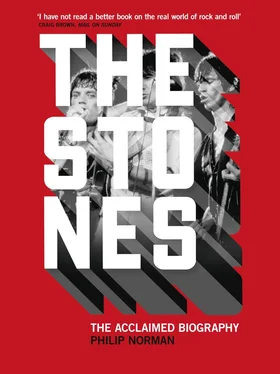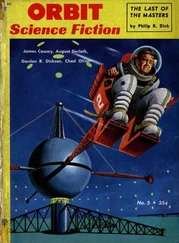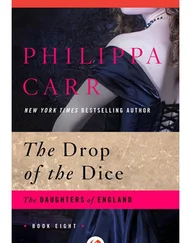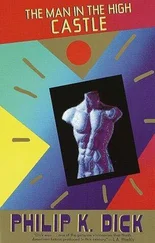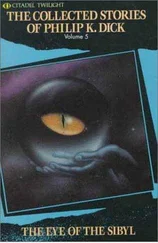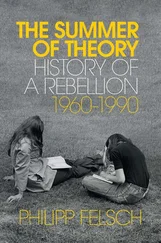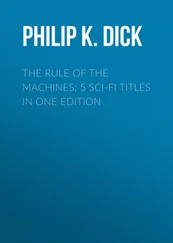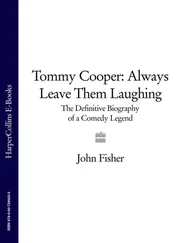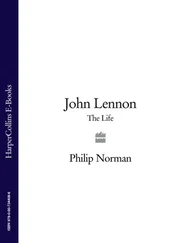The name which in later years seemed so typical a product of its owner’s imagination was, in fact, genuine. Andrew Loog Oldham was the son of a Dutch-American air force officer, killed on a bombing mission over Germany in 1944. Born out of wedlock, the baby received both parents’ names. His Dutch origins were always faintly manifest in a pink complexion, butter-coloured hair and eyes whose myopic pallor gave Oldham, even at his most uppity and outrageous, the look of a rather studious small boy.
A private boarding school to which his widowed mother sent him provided an early object lesson in the relation of fantasy to profit. The school – in Witney, Oxfordshire – was run by an ex-army officer, a dashing figure whose frequent absences were rumoured to be connected with vital work for the government. The head was, in fact, a prisoner on parole who moved around the country, setting up small schools, collecting fees, running up bills, then vanishing without trace. That headmaster was Andrew Loog Oldham’s first lesson in the principle that, provided you had nerve and style enough, you could get away with almost anything.
In 1955, the pink-faced Hampstead schoolboy was a familiar figure among the teenage crowd at Soho’s famous 2 I’s coffee bar. Norah, the doorkeeper, knew him well and would let him downstairs into the skiffle cellar without paying the usual one-shilling cover charge. His taste in pop heroes was eccentric even then – Wee Willie Harris, green-haired and wizened; Vince Taylor, an early American rocker, afterwards famous in France. ‘It was always the sex in rock ’n’ roll that attracted me … the sex that most people didn’t realize was there. Like the Everly Brothers. Two guys with the same kind of face, the same kind of hair. They were meant to be singing together to some girl, but really they were singing to each other.’
From the age of thirteen or so, Oldham saw himself as an amalgam of two movie roles, both portrayed by his screen idol, the suave if faintly reptilian Laurence Harvey. He wanted to be Harvey’s version of Joe Lampton, ruthless working-class hero of Room at the Top . He wanted just as much to be the jive-talking young Jewish hustler whom Harvey played in Expresso Bongo , sashaying round Soho in Italian box jacket and rakish trilby hat, scouring the pasteboard streets for any quick way to a dividend.
He left Wellingborough College at sixteen with three GCE O-Levels – in English, divinity, and, he claims, rifle shooting – and at once set about making his way in the world as Laurence Harvey had shown him. His first coup was to go to Chelsea, walk into Mary Quant’s clothes boutique and ask for a job in any capacity whatever. Mary Quant and her husband, Alexander Plunkett-Green, were amused by the blond-haired youth and his barefaced effrontery. They agreed to take him on as an odd-job boy, teamaker and messenger.
He worked for Mary Quant throughout the period when her plungingly simple black and white dresses, short skirts, sailor necks and oversized bows altered the look of haute couture, and of London, forever. In February 1962, the first issue of a colour supplement by the hitherto stuffy Sunday Times featured a Quant dress worn by a new young model, Jean Shrimpton, and photographed, not by the customary middle-aged society acolyte but by a young man, David Bailey, who came from London’s East End and – still more outrageously – made no attempt to conceal it. This first ‘in crowd’, as defined by the Sunday Times , did not, of course, include anyone named Andrew Loog Oldham; still, he was happy. ‘I was where I wanted to be – around stars.’
At this stage, the only way of achieving stardom himself, as his mental scenario had dictated, was to become a pop singer. The fact that he could neither sing nor play an instrument seemed hardly relevant. Over a period of months, London agents and managers would be intermittently persecuted by the same blond, bespectacled, unmusical youth, posing under such aliases as ‘Chancery Laine’ and ‘Sandy Beach’.
By working for Mary Quant all day, and by night as a waiter at Soho’s Flamingo Club, he saved enough to migrate to the French Riviera. There, for several months, he worked in sea-front bars and as an itinerant window dresser. There, too, in company with two freelance journalists, he concocted his first great money-making scheme. The plan was to kidnap a wealthy heiress. Andrew would keep her, drugged, in a flat in Monte Carlo while the journalists sold the story to the London Daily Express . It would give the story a piquant twist, they said, if Andrew were subsequently to marry the heiress. This he was quite willing to do. Unfortunately, the scheme foundered after the, not unwilling, girl had been taken to the Monte Carlo flat. Her father had friends in the British government, and got an official D-notice issued, prohibiting any newspaper from running the story. Andrew Loog Oldham thus failed to become nationally famous either as a kidnapper or as a cad.
Back in London, a job with the Leslie Frewin publishing house provided an entrée into the decidedly glamorous world of public relations. He left Frewin to join a PR company whose clients included the pop singer Mark Wynter. Handsome, blow-waved and insipid in the prevailing American style, Wynter was following what seemed an inexorable course from Top Twenty hit to low-budget ‘exploitation’ feature film. One of Oldham’s jobs was to accompany him on location to Twickenham studios and share a bedroom with him at a nearby small hotel. ‘Every morning, Mark used to get up very early and creep off to the bathroom to wash and shave and fix his hair. Then he’d come and get back into bed. A bit later, he’d sit up and say “Well, Andrew – time to set off for the studios.” He was convinced I thought he always woke up looking like that. I thought that was great – that really was looking after your image.’
Two major pop impresarios, Larry Parnes and Don Arden, between them controlled all the singers and groups for whom Oldham hoped to work as publicist. Parnes ran a menagerie of exotically named singers from offices in Cromwell Road, opposite the headquarters of the Boy Scout movement (at which, in spare moments, he liked to gaze through binoculars). Don Arden, an authentically frightening figure, rivalled Larry Parnes in promoting pop package tours, cobbled from the hitmakers of the moment. Andew Loog Oldham joined Arden for a while but was fired after inviting journalists to view cinema seats which, during a particularly well-appreciated package show, had been slashed with razors and drenched with female urine.
He was by this time a well-known figure around ABC-TV’s studios in Aston Road, Birmingham, where Thank Your Lucky Stars was recorded. In February 1963, he stood and watched the Beatles give their first nationwide performance of Please Please Me. He later approached Brian Epstein, and offered himself as publicist for Epstein’s company, NEMS Enterprises. Brian Epstein, it happened, was preparing to launch two other Liverpool acts, Gerry and the Pacemakers and Billy J. Kramer and the Dakotas. He agreed to hire Andrew Loog Oldham to promote the two groups on a monthly retainer of £25.
The arrangement was somewhat hampered by Tony Barrow, a London-based Liverpudlian already writing press releases about the Beatles and sleeve notes for their first album Brian Eptstein ordained that Barrow should concentrate on written handouts while Oldham – by now running his own PR company – dreamed up stunts to get paragraphs into the papers. The Beatles themselves, watched over with obsessive jealousy by Epstein, remained always tantalizingly out of reach. His NEMS work was for the advancement of Gerry Marsden and Billy J. Kramer, each awaiting Top Twenty success in cardboard shoes and cheap little shortie overcoats.
Читать дальше
